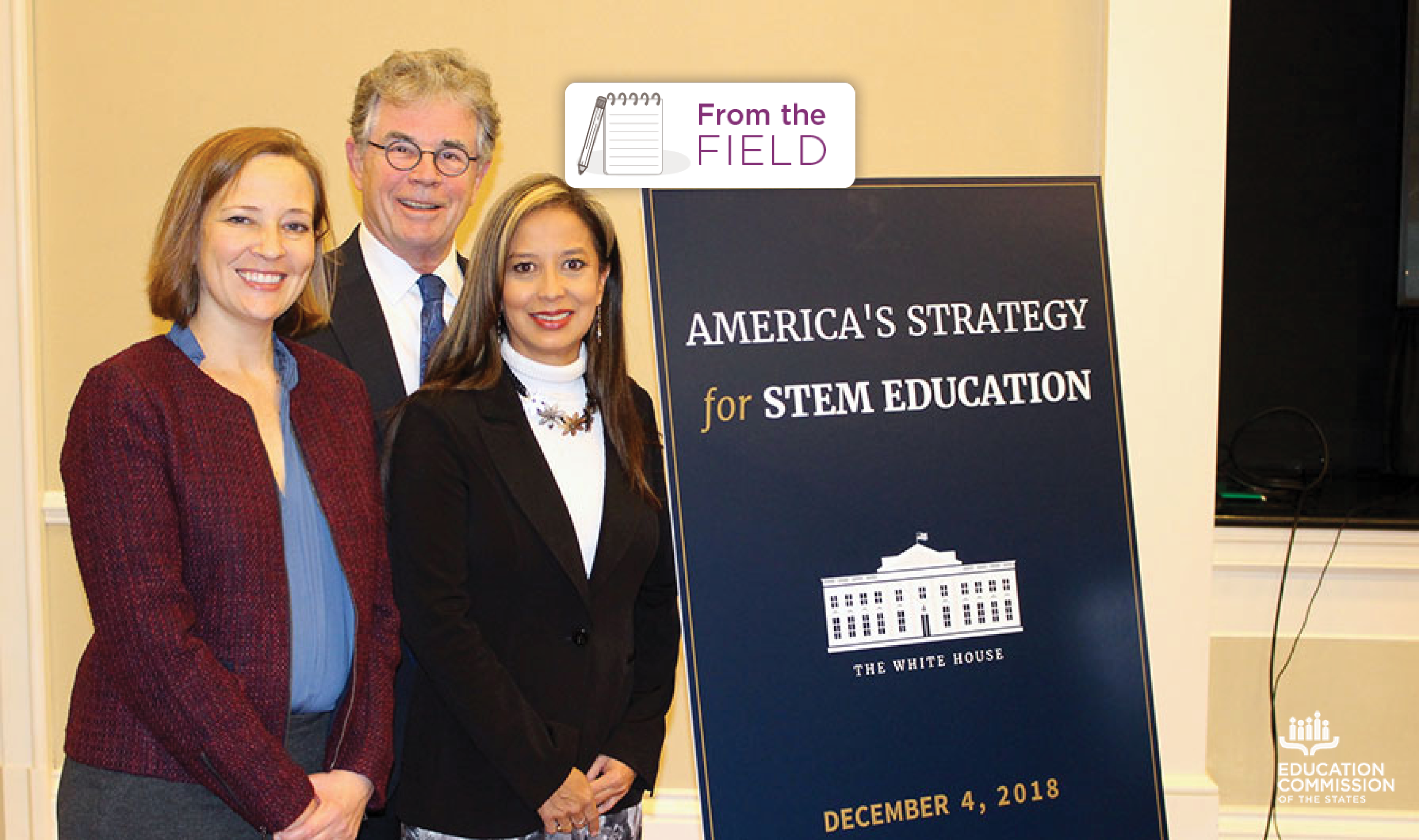As more states finish their 2017 legislative sessions, it’s encouraging to see enactments reflecting the idea that to increase the number and diversity of students completing high-quality computer science coursework, policies must move beyond computer science fulfilling a core credit for high school graduation. States should consider:
- Adopting K-12 computer science standards, as West Virginia and South Carolina did in the last few months, and as Iowa S.F. 274 directs their state board to do.
- Developing a statewide bank of high-quality resources, to keep computer science educators from reinventing the wheel classroom by classroom, as they work to deliver instruction aligned with those standards. Colorado H.B. 17-1184 calls for the department of education to develop just this kind of resource.
- Establishing a statewide hub for computer science teacher training and professional development, again, to maximize state investment and avoid reinventing the wheel. Virginia Chapter 779 taps Northern Virginia Community College to contract with a partner organization to market and deliver high-quality training and professional development for teachers across the Commonwealth.
Admittedly, it’s probably too soon to start talking about “next frontiers” in state K-12 computer science policy. The landmark State of the States Landscape Report: State-Level Policies Supporting Equitable K-12 Computer Science Education establishes where states are in adopting eight priority policies. While it’s helpful to know how far states have come, it also makes clear that many states have far to go.
But typically thinking three steps ahead, here are some suggestions for next frontiers for policymakers who too may be thinking several steps down the road. (Pragmatists, please don’t throw tomatoes at me.)
- Addressing – and funding – the computer science/career and technical education (CTE) overlap: All too often, computer science and CTE are perceived in two separate silos. However, Utah S.B. 190 conceptualizes computer science as part of CTE, and vice versa. The measure creates the Computing Partnerships Grants program to create a comprehensive K-16 computing partnerships program. Common elements of the program must include work-based learning opportunities, and stacked credentials that allow for multiple exit and entry points, among others.The grant program must incentivize schools and districts to work with the STEM Action Center, state board of education, Talent Ready Utah, industry representatives, and secondary partners to design and implement comprehensive K-16 computing partnerships by, among other means:
- Leveraging existing resources for content, professional learning, and instruction, including existing CTE funds, programs and initiatives.
- Identifying the appropriate credentials that align with industry needs and providing the credentials in a stacked credentials pathway.
- Broadening the list of rigorous computer science courses that may fulfill a core graduation credit: Perhaps states could broaden the definition of computer science courses that may fulfill a math, science or other core credit for high school graduation. Education Commission of the States’ 2016 analysis, plus some additional research found that some 10 states require the computer science course to be AP computer science. Perhaps a rigorous CTE computer science course could also fulfill graduation requirements in these states?
- Using dual enrollment to increase the diversity of computer science majors and the computer science workforce: This is unquestionably a topic that deserves its own blog post. Generally speaking, females are overrepresented in dual enrollment programs, but underrepresented in computer science coursework. Some states are taking strides to increase the percentage of students of color in dual enrollment coursework. And we know students who dually enroll are more likely than their peers to enroll in and complete college. With the right policies in place, could dual enrollment be the necessary policy lever to increase female and minority students’ computer science degree completion – and by extension, diversify the computer science workforce?









